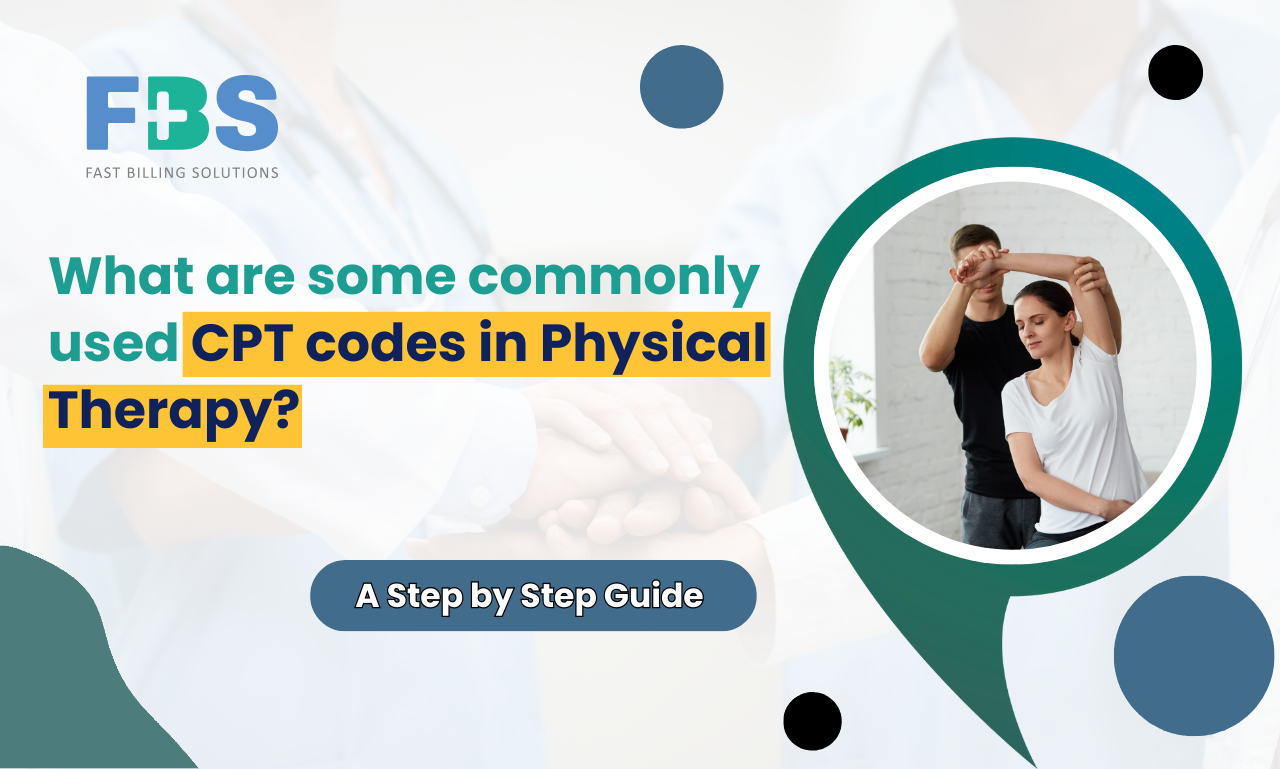
Crack the Code: Mastering Physical Therapy’s CPT Secrets!
Understanding Current Procedural Terminology (CPT) codes is crucial for both physical therapists and billing professionals. These codes not only simplify the billing process but also ensure accurate reimbursement for the services provided. If you’re a physical therapist or a medical billing expert, mastering CPT codes can streamline operations and maximize revenue.
In this guide, we’ll explore the most commonly used CPT codes in physical therapy and provide tips for effective coding and billing.
Difference Between ICD-10 and CPT Codes
ICD-10 codes classify diseases and conditions, providing diagnostic information, while CPT codes describe the procedures and services performed by healthcare providers. Both play integral roles in medical billing and documentation. For example, ICD-10 might indicate “low back pain” (M54.5), whereas CPT specifies the treatment given, such as therapeutic exercise (97110).
Common CPT Codes in Physical Therapy
Physical therapists frequently use CPT codes to document and bill for services. Commonly used codes include:
Commonly Used CPT Codes in Physical Therapy
Here’s a list of some frequently used CPT codes in physical therapy, categorized by their purpose:
Physical Therapy Evaluations
- 97161: Physical therapy evaluation – low complexity
- 97162: Physical therapy evaluation – moderate complexity
- 97163: Physical therapy evaluation – high complexity
- 97164: Re-evaluation of physical therapy established plan of care
Therapeutic Procedures
These involve clinician-patient interactions aimed at improving functional outcomes:
- 97110: Therapeutic exercises (e.g., strengthening, range of motion) – per 15 minutes
- 97112: Neuromuscular reeducation (e.g., balance, coordination) – per 15 minutes
- 97530: Therapeutic activities (e.g., dynamic activities to improve functional performance) – per 15 minutes
- 97116: Gait training therapy – per 15 minutes
- 97535: Self-care/home management training – per 15 minutes
Modalities
These codes represent the physical agents used to reduce pain or enhance recovery:
- 97010: Application of hot or cold packs (non-billable in many cases)
- 97012: Mechanical traction therapy
- 97035: Ultrasound therapy
- 97014/ G0283: Electrical stimulation (unattended)
- 97032: Electrical stimulation (manual) – per 15 minutes
Manual Therapy
- 97140: Manual therapy techniques (e.g., joint mobilization, manipulation, manual lymphatic drainage) – per 15 minutes
Other Procedures
- 97542: Wheelchair management training – per 15 minutes
- 97750: Physical performance test or measurement – per 15 minutes
- 97760: Orthotic management and training – initial encounter
- 97761: Prosthetic training – initial encounter
- 97763: Orthotic/prosthetic management and training – subsequent encounter
Codes for Initial Evaluations
CPT codes for evaluations depend on the complexity of the assessment:
- 97161: Low complexity evaluation
- 97162: Moderate complexity evaluation
- 97163: High complexity evaluation
Codes for Re-evaluations
Re-evaluations use a distinct code:
- 97164: Re-evaluation of a physical therapy plan of care This code is typically used when there are significant changes in the patient’s condition or progress.
Codes for Treatment
Treatment codes address various therapeutic interventions:
- 97110: Therapeutic Exercise
- 97112: Neuromuscular Re-education
- 97530: Therapeutic Activities
- 97140: Manual Therapy
Procedure Codes in Physical Therapy
Physical therapy includes both procedure-based and time-based codes. Procedure-based codes cover specific interventions, while time-based codes depend on the duration of the service provided.
Timed-Based Physical Therapy Procedure Codes
These codes are billed in 15-minute increments:
- 97110: Therapeutic Exercise
- 97112: Neuromuscular Re-education
- 97530: Therapeutic Activities
- 97542: Wheelchair Management/Training
Untimed Physical Therapy Procedure Codes
Untimed codes are billed once per session, regardless of duration:
- 97014: Electrical Stimulation (unattended)
- 97010: Hot/Cold Packs
Modifier Codes
Modifiers provide additional information about a service. Common modifiers in physical therapy include:
- 59: Distinct procedural service
- GP: Indicates services provided under a physical therapy plan of care
Tips for Mastering Physical Therapy CPT Codes
Document Accurately
Detailed documentation is essential for proper coding. Ensure that all services provided are clearly described and justified in the patient’s records.
Understand Time-Based Codes
Many CPT codes, especially for therapeutic procedures, are time-based (e.g., per 15 minutes). Familiarize yourself with the 8-minute rule to determine when to bill for an additional unit.
Stay Updated
CPT codes are updated annually. Regularly review AMA updates and payer-specific guidelines to ensure compliance.
Avoid Common Errors
- Don’t use non-billable codes (e.g., 97010 for hot/cold packs) unless required.
- Avoid upcoding, which can lead to audits or denials.
- Ensure correct use of modifiers, such as GP (services delivered under a physical therapy plan of care).
Leverage Technology
Use electronic health record (EHR) systems with integrated coding features to reduce errors and save time.
Documentation Guidelines for CPT Coding in Physical Therapy
Accurate documentation ensures compliance and proper reimbursement. Include the following:
- Specific details about the intervention
- Duration and frequency of the service
- Patient’s progress and response to treatment
- Justification for the chosen codes
Final Thoughts
Mastering CPT codes is essential for efficient practice management in physical therapy. By understanding the differences between timed and untimed codes, knowing when to use modifiers, and adhering to proper documentation practices, therapists can streamline billing processes, avoid claim denials, and focus on patient care.

